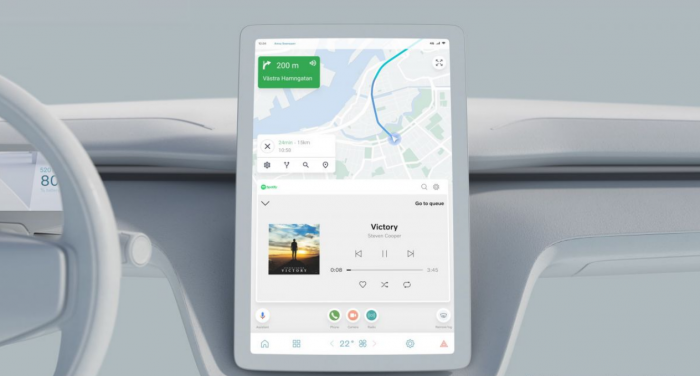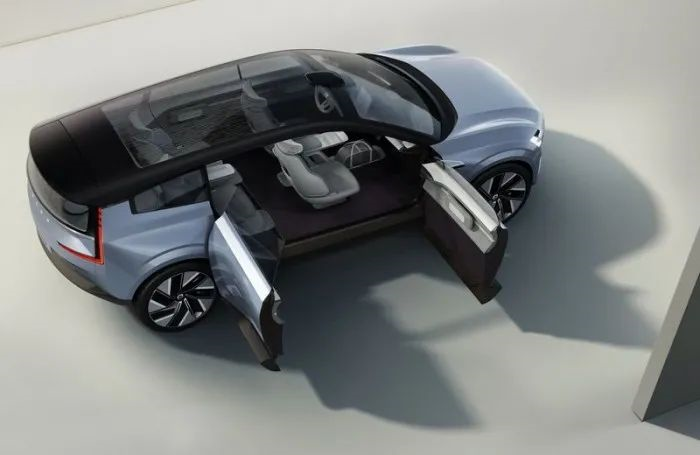Volvo and Google team up again to bring new in-car operating system to more drivers
Author: Mr.Yu
Volvo and Google are working together to bring the next generation of in-car experience and driving safety to more drivers.
At the recent Tech Moment event, Volvo announced the launch of its new in-car operating system, VolvoCar.OS.
Previously, Volvo and Google collaborated on developing a new entertainment system for cars based on Android Automotive OS, which has already been successfully installed on models such as the XC40 Recharge, XC60, S90, and V90.
Clearly, both sides were satisfied with their previous collaboration, as Google has again played an important strategic partnership role with Volvo’s transition to a fully automated luxury electric vehicle brand.
Speaking of which, Microsoft’s Windows 11 next door must be envious: on the one hand, it was awarded the title of “the strongest Android emulator in history” by technology media, and on the other hand, it has been criticized by global netizens for finally solving the inherited blue screen problem by turning it green.
But back to the point, Volvo revealed in its “technology roadmap” presentation that it plans to bring all software development in-house.
With the core of VolvoCar.OS still being Android Automotive OS, Volvo explained how using real-time data can improve safety and provide a “potential shortcut” for automation. The cooperation with Google aims to provide new “connected user experience.”
As this operating system becomes more popular, users will be able to access the ecosystem functions they already have on their smartphones, such as Google Assistant, Google Maps, and Google Play – is this the rhythm of “Google all-in-one” on board?
Volvo also stated that other underlying operating systems, including QNX, AUTOSAR*, and Linux, are also in support.
Clearly, Volvo is committed to turning more cutting-edge technology into services on a regular basis, and continuing to invest in the high-end new energy vehicle sub-market. We all know that Volvo already announced its 2030 full electrification declaration. Therefore, simplifying the software development process and other product development-related processes becomes even more critical.The same logic may not apply to fast fashion beating traditional fashion, but it can easily mix and match to create great effects and quickly fill your wardrobe; the rapid iteration of smartphones seems to have a touch of consumerism, but users with potential replacement needs are undoubtedly happier.
To this end, Volvo plans to run its own operating system in all future electric cars, simplifying multiple operating systems into one comprehensive ecosystem.
With the release of various APIs, developers will be able to access a series of in-car functions, such as vehicle sensor data, user interfaces, and cloud-based functions such as fleet data, enabling them to create new services and applications for Volvo cars, thereby increasing their availability and functionality.
The CEO of Zenseact, Volvo’s autonomous driving software development department, Ödgärd Andersson, says, “With the help of real-time data, the entire development process will be greatly shortened, with the potential to reduce the time frame from years to days.”
Of course, all of this is subject to user permission. After all, the EU’s GDPR (General Data Protection Regulation) is not something to be taken lightly. If you question the enforcement power of the policy, you might as well look at those challengers who dare to be blatant about user privacy. The weeds on their graves are almost five meters high.
To ensure the smooth operation of VolvoCar.OS, Volvo has chosen to adopt a core computing system, which will be introduced in new models to be launched in 2022. This move reduces dependencies on single functions and systems for multiple electronic control units and gradually separates hardware from software. Volvo believes that this will help maintain their state of “evergreen”.
The new driving display will also be a key direction for Volvo’s future entertainment system. As we all know, Volvo has always been quite focused on building driving safety.
During the event, Volvo showcased some groundbreaking concept solutions designed to reduce driver distraction, keep them focused on driving, and maintain road safety.
For example, placing a high-resolution display above the steering wheel in front of the driver, providing only key information relevant to driving, such as speed and battery level. They also have a new HUD solution that allows the driver to view critical information without even glancing at it.We can see that Volvo continues the Nordic brand’s iconic minimalist style in terms of interaction logic – clean, consistent, and easy to understand. Volvo believes that providing the necessary and correct information at the right time helps drivers obtain the required information without taking their eyes off the road.

Volvo’s Chief Technology Officer, Henrik Green, proudly stated, “Our team has spent a lot of time collaborating with Google to further develop and improve the user experience of the next generation of Volvo cars. Especially in terms of safety, quietness, and simplicity, we have made great progress due to the deep integration of design and technology. We believe that this will enable Volvo to manufacture better cars while setting new industry standards.”
We can see that Volvo regards the seamless connection between cars and mobile devices as a future focus, just as BMW, Apple, and Google have successively announced that digital car keys will become part of Volvo’s next generation of electric cars. At the same time, the Volvo Cars app will provide more support in continuous updates, such as vehicle-home connectivity, payment of charging costs, and more.
Before the “multi-end one system, seamless circulation” of Huawei’s HarmonyOS, and now Volvo and Google have jointly developed cross-terminal experiences – we have reason to believe that the leading manufacturers have found the possibility of another ecological route after repeated attempts.
As Volvo’s Chief Technology Officer Henrik Green said, “By developing software internally, we will be able to implement development speed more quickly into your Volvo car. Just like new software and features on smartphones or personal computers, more and more new software and features will be in place quickly with OTA. Over time, your Volvo will become easier and more interesting to use.”
Glossary:
AUTOSAR (AUTomotive Open System ARchitecture) is a leading automotive manufacturer and supplier working together to develop an open, standardized software architecture for automotive electronic control devices. Its goals include the development of extendable development, software migration, consideration of effectiveness and safety requirements, establishment of cooperation relationships among parties, the sustainable use of natural resources, and maintenance services for the entire product lifecycle.
This article is a translation by ChatGPT of a Chinese report from 42HOW. If you have any questions about it, please email bd@42how.com.
